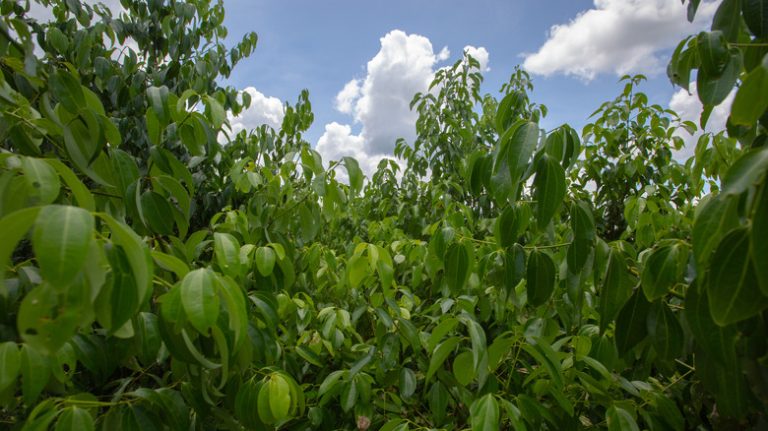Loropetalum, also known as Chinese fringe flower, is a beautiful shrub that adds a touch of color to any garden. With its diamond-deep blooms and delightfoliage, it is a popular choice for gardeners in the Southeast. Whether you choose the dark- or light-leaved variety, loropetalum is sure to be a showstopper in your yard.
Growing loropetalum is relatively easy, but it does require some care and maintenance. One of the key things to keep in mind is that loropetalum prefers well-draining soils and should be planted in a sunny location. It can tolerate partial shade, but full sun will result in larger, more vibrant blooms.
Watering is also important for loropetalum. It should be watered regularly, especially during dry spells or in the summer season. However, be careful not to overwater, as this can lead to root rot. Additionally, loropetalum is drought-tolerant once established and does not require excessive watering.
When it comes to pruning loropetalum, it is best to do so after the blooming season has ended. This is typically in late winter or early spring. Pruning will help maintain the shape of the shrub and promote healthy growth. You can also prune loropetalum to control its height, as it can grow up to 6 feet tall if left unpruned.
In terms of fertilizing loropetalum, it is recommended to fertilize it once a year in the spring. You can use a slow-release fertilizer specifically formulated for shrubs. Follow the instructions on the fertilizer package for best results.
Loropetalum is generally resistant to pests and diseases, making it a low-maintenance plant. However, it is important to keep an eye out for any signs of disease or infestation. If you notice any issues, promptly treat them to prevent further damage.
In conclusion, loropetalum is a beautiful flowering shrub that can add a touch of color and elegance to any garden. With proper care and maintenance, it will thrive and delight gardeners with its vibrant blooms and attractive foliage.
Sources:
“Growing Loropetalum” by Heather Rhoades
Loropetalum chinense
Loropetalum chinense, also known as Chinese fringe flower, is a quickly growing and multi-stemmed shrub native to the southeast. Its proven resistance to pests and diseases, as well as its showy flowers and delightfoliage, make it a popular choice for gardeners.
The Loropetalum chinense ‘rubrum’ variety, known for its fuchsia-colored fringe flowers with finely textured petals, is a favorite among gardeners. It can be grown in a variety of climates and soils, making it a versatile plant for landscape design.
When growing Loropetalum chinense, it is important to choose the right location and soil. It thrives in well-drained soils with added amendments, such as compost or finely shredded bark. If planting in containers, use a well-draining potting mix formulated for acid-loving plants.
Loropetalum chinense prefers full sun or partial shade, but it can tolerate a range of light conditions. Consistently watering the plant is essential, especially during dry periods. However, it is important to avoid over-watering, as this can lead to root rot.
Repotting Loropetalum chinense may be necessary if the plant outgrows its current container. When repotting, be sure to use a plastic pot with drainage holes and amend the potting mix with organic matter for moisture retention.
In terms of maintenance, Loropetalum chinense may benefit from occasional pruning to control its growth and shape. Pruning can also help encourage more flowers and a compact form. Additionally, applying a layer of mulch around the base of the plant can help conserve moisture and control weeds.
Loropetalum chinense is a versatile plant that can be used in various landscape settings. It is often planted as a border, groundcover, or slope stabilizer. Its attractive foliage and late winter to early spring flowers add color and interest to any garden.
Overall, Loropetalum chinense is a beautiful and low-maintenance plant that can thrive in a variety of climates. Whether grown in a formal garden or a more natural setting, it is sure to be a delightful addition to any landscape.
GROWING LOROPETALUM – CARING FOR CHINESE FRINGE FLOWER
Loropetalum, also known as Chinese fringe flower, is a broadleaf evergreen shrub that can be kept as both a compact dwarf or a big, wide sprawling shrub. It is native to the woodlands of Southeast Asia and is beloved for its showy plum-colored foliage and delicate, pubescent flowers. With the right care and attention, loropetalum can thrive in a variety of landscapes, from small containers to large slopes.
When planting loropetalum, choose a location with well-drained soil and full to partial sun. These shrubs prefer acidic soil and can benefit from the addition of bark chips or other organic matter to the planting hole. Follow the instructions on the fertilizer packaging to ensure proper nutrition for your loropetalum.
During the growing season, loropetalum should be watered deeply and regularly, especially during dry periods. However, it is important not to overwater, as loropetalum does not tolerate soggy soil. In winter, loropetalum is more tolerant of dry conditions and should be watered sparingly.
Loropetalum is generally hardy in USDA plant hardiness zones 7 to 10, but some types, such as the dwarf PixieDwarf and the taller Zhuzhou, can tolerate colder winters. To protect loropetalum from frosts and freezes, consider covering the plant with a frost blanket or moving container-grown plants indoors during extreme cold spells.
Pruning loropetalum should be done after flowering to maintain its shape and encourage new growth. This can be done by simply pruning back any unruly or crossing branches. Loropetalum can also be lightly sheared to create a more compact form.
With their beautiful foliage, ease of care, and versatility, loropetalum shrubs are a great addition to any garden or landscape. Whether you choose a compact dwarf variety or a taller, more sprawling type, loropetalum will surely add a touch of color and texture to your outdoor space. If you have any questions or need further information about growing and caring for loropetalum, feel free to ask. Thanks for reading!
LOROPETALUM BASICS
The Loropetalum, also known as the Chinese Fringe Flower, is a beautiful plant that can bring a touch of elegance to any garden or landscape. This evergreen shrub is a member of the witch hazel family and is native to China and Japan. It is prized for its stunning, fringe-like flowers and its attractive dark green foliage.
When caring for Loropetalum, it’s important to choose a well-drained soil and a location that receives full sun to partial shade. These plants are drought-tolerant once established, but they will benefit from regular watering, especially during hot and dry periods.
In terms of height and spread, Loropetalum can vary depending on the specific cultivar. Some dwarf varieties will stay compact and reach a mature height of only a few feet, while others can grow to be 10-15 feet tall. It’s also important to note that Loropetalum can be pruned to control its size and shape, making it a versatile plant for any landscape.
One of the key features of Loropetalum is its flowering ability. The flowers are often described as “dancing” due to their delicate and feathery appearance. They bloom in late winter to early spring, adding a burst of color to the garden during a time when many other plants are still dormant. The flowers can range in color from white to pink to deep magenta, depending on the specific cultivar.
In addition to its striking flowers, Loropetalum also has attractive dark bark on its branches, which adds interest to the plant even when it’s not in bloom. This makes it a great choice for landscapes that need year-round visual appeal.
If you’re considering adding Loropetalum to your garden, it’s worth noting that some varieties have been known to have toxicity concerns. While most Loropetalum cultivars are not toxic to humans or animals, it’s always a good idea to ask a knowledgeable gardener or do some research before planting.
Loropetalum can be grown in the ground or in containers, making it a versatile plant for any garden. If planting in the ground, be sure to dig a hole that is as deep and wide as the root ball and backfill with a well-draining soil mix. In containers, use a high-quality potting mix formulated for shrubs and be sure to choose a container with drainage holes to prevent waterlogged roots.
Caring for Loropetalum is relatively easy. It prefers consistently moist soil, so be sure to water regularly, especially during dry spells. However, it’s important not to overwater, as Loropetalum does not tolerate wet feet. Applying a layer of mulch around the base of the plant can help to conserve moisture and control weed growth.
Finally, when it comes to pruning Loropetalum, it’s best to do so after flowering. This will help to promote new growth and maintain a tidy shape. Light pruning throughout the year can also help to maintain the desired size and shape of the plant.
In conclusion, Loropetalum is a beautiful and versatile plant that can add color and interest to any garden or landscape. With its stunning flowers, attractive foliage, and ease of care, it’s no wonder that Loropetalum is a popular choice among gardeners. Whether you’re looking to spruce up your borders or create a focal point in your landscape, Loropetalum is definitely a plant to consider.
Zones
The Loropetalum, commonly known as the Chinese Fringe Flower, is a hardy and versatile plant that can be grown in a variety of zones. Here are some faq’s about the zones suitable for growing Loropetalum:
- The Loropetalum plant is hardy in zones 7-10.
- It can tolerate a range of temperatures, from mild winters to hot summers.
- In colder zones, it’s best to provide some winter protection, such as mulching the roots.
- If you live in a zone outside the recommended ones, you can still grow the Loropetalum as a container plant and move it indoors during extreme weather conditions.
The Loropetalum plant can be a great addition to your garden, regardless of your zone. Its fuchsia-like blooms are showy and attractive, adding a pop of color to any landscape. The leaves of the Loropetalum are ovate and slightly pubescent, giving it a unique texture and appearance.
The Loropetalum plant comes in different varieties, including the common Loropetalum chinense and the shidare Loropetalum. There are also different sizes available, from dwarf varieties that stay compact to larger shrubs that can reach up to 10 feet in height. Choosing the right size for your landscape is important, so be sure to check the growth instructions and heights before planting.
The Loropetalum plant prefers well-drained soil and can tolerate drought and dry conditions once established. However, it’s important to water it regularly during the initial planting period to help it establish a strong root system. Additionally, watering should be done consistently in areas with high heat or dry spells.
Fertilizing the Loropetalum plant is also important to promote healthy growth and blooming. There are specially formulated fertilizers available for broadleaf evergreen shrubs like Loropetalum. Follow the instructions on the fertilizer package and apply it in early spring and once again in early fall.
The Loropetalum plant can be propagated through seeds or cuttings. If you choose to propagate through cuttings, take a cutting from the plant in early spring or fall and dip the cut end in rooting hormone before planting it in well-drained soil. Keep the soil moist until the cutting roots.
The Loropetalum plant is generally pest and disease-resistant, making it a low-maintenance plant. However, it can be prone to aphid infestations, so be sure to monitor your plant regularly and take measures to control them if necessary.
The Loropetalum plant is deer resistant and has no known toxicity, making it a safe choice for gardens with deer problems or households with pets and children. However, it’s always a good idea to take precautions and keep an eye on your pets and children around any plants.
In conclusion, the Loropetalum plant is a versatile and beautiful addition to any garden. It’s hardy, drought-tolerant, and easy to care for. Whether you’re looking for a plant with stunning blooms, delightful foliage, or both, the Loropetalum has got you covered.



